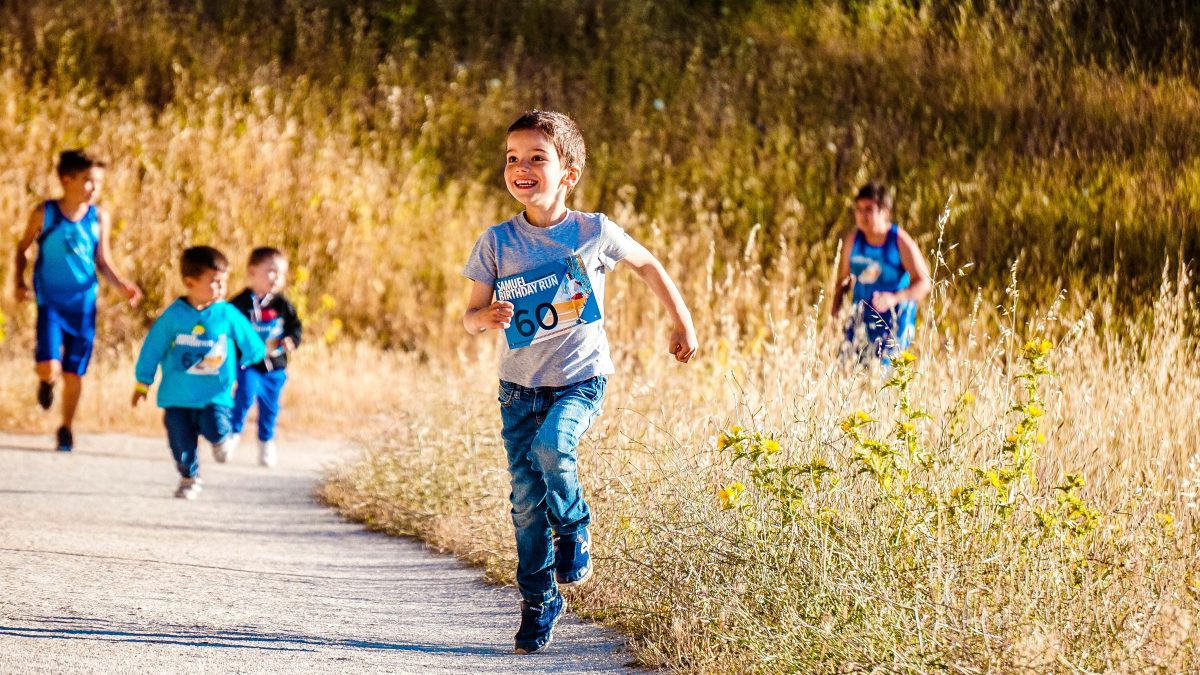Last Updated on: 14th July 2024, 10:56 am
Introduction to Family Fitness

Physical activity is a cornerstone of health at any age. In today’s world, where sedentary lifestyles are increasingly common, the importance of integrating movement into our daily lives cannot be overstated. Families, in particular, face the challenge of balancing work, education, and leisure in a way that promotes health and well-being.
- Current trends show a marked increase in sedentary behavior among all age groups. This shift towards more time spent indoors, often in front of screens, has significant implications for physical and mental health.
- Immediate action is needed, setting the stage for a transformation towards a more active, healthier family life.
- Embracing physical activity as a family not only strengthens the body but also the bonds between its members. It sets a foundation for children to carry healthy habits into adulthood, ensuring a legacy of wellness.
The journey towards a more active lifestyle is one that promises rewards for every step taken together.
Understanding the Benefits of Parent-Child Fitness Activities

Strengthening Family Bonds Through Shared Experiences
When families engage in fitness activities together, they create memories that last a lifetime. These shared experiences foster a sense of unity and understanding, strengthening the emotional ties that bind. It’s about more than just exercise; it’s about building a foundation of support and love.
Improving Physical Health and Fitness Levels
- Regular physical activity boosts cardiovascular health, strengthens muscles, and enhances flexibility for both parents and children.
- This collaborative approach to fitness not only elevates the physical well-being of each family member but also sets the stage for a lifetime of health and vitality.
Enhancing Mental Health and Reducing Stress
Exercise is a powerful stress reliever. By participating in fitness activities together, families can combat the pressures of daily life, reducing anxiety and promoting a sense of calm. This shared pursuit of wellness contributes to a healthier, happier home environment.
Encouraging Lifelong Healthy Habits in Children
Children learn by example. When they see their parents prioritizing fitness, they’re more likely to adopt these habits themselves. This early introduction to a healthy lifestyle paves the way for lifelong wellness, instilling values that will benefit them for years to come.
Parent-child fitness activities offer a unique opportunity to enhance the well-being of the entire family. By investing time in these shared experiences, families can enjoy the myriad benefits that come from a life of health and fitness. It’s a journey worth taking, together.
Choosing the Right Activities for Your Family

Assessing Fitness Levels and Interests
Begin by evaluating the fitness levels and interests of each family member. This ensures that the activities chosen are enjoyable and accessible for everyone. Understanding these preferences is crucial in fostering a positive attitude towards fitness.
Age-Appropriate Activities for Children
- For toddlers, simple games like tag or hide and seek stimulate both their minds and bodies.
- Older children may enjoy more structured activities, such as team sports or cycling. The key is to match the activity with the child’s developmental stage.
Incorporating Variety and Fun
Variety is the spice of life, and this holds true for family fitness activities. Mixing things up keeps everyone interested and eager to participate. Try alternating between outdoor adventures, like hiking, with indoor fun, such as dance-offs or yoga sessions. The goal is to make fitness enjoyable and something the whole family looks forward to.
Balancing Structured Activities with Free Play
While structured activities have their place, it’s also important to allow time for free play. This unstructured time encourages creativity and lets children explore their physical capabilities in a less formal setting. It’s a balance that promotes a healthy attitude towards physical activity, showing that fitness can be both fun and flexible.
Choosing the right activities for your family doesn’t have to be a daunting task. By considering each member’s fitness level and interests, selecting age-appropriate activities, incorporating variety, and balancing structured activities with free play, you can create a fitness routine that’s enjoyable and beneficial for everyone. This approach not only enhances physical health but also strengthens the bonds between family members, making fitness a cherished part of your family’s life.
Overcoming Common Challenges in Family Fitness

Finding Time for Physical Activities
Carving out time for physical activities amidst a bustling schedule can seem daunting. Yet, integrating short, fun exercises into daily routines can make a significant difference. Whether it’s a brisk walk post-dinner or a weekend family hike, every moment counts. The key is consistency and making physical activity a non-negotiable part of your family’s day.
Dealing with Resistance
Resistance, be it from children or parents, is a common hurdle. Addressing this begins with understanding the root of the reluctance. Often, making activities fun and engaging, or allowing the resistant member to choose the activity, can turn apprehension into enthusiasm. Remember, patience and encouragement go a long way.
Adjusting for Different Abilities
Family members will invariably have different skill levels and abilities. Selecting activities that are adaptable, such as cycling, where difficulty levels can be adjusted, or team games that can be modified, ensures everyone can participate. The focus should be on inclusion and celebrating each other’s efforts and improvements.
Making Fitness Enjoyable
Transforming fitness activities from a chore into a joyous family event is crucial. This could mean turning exercise into a game, setting up friendly competitions, or celebrating milestones. When fitness is fun, it becomes a highlight of the day, something the whole family looks forward to.
Overcoming these challenges requires creativity, flexibility, and a commitment to making health a priority. By addressing each obstacle with a positive attitude and a willingness to adapt, families can enjoy the vast benefits of being active together. It’s about creating a healthier, happier family life, one step at a time.
Setting Goals and Tracking Progress
The Importance of Realistic Fitness Goals
Setting realistic and achievable fitness goals is a cornerstone of family wellness. It’s about creating a roadmap that guides each family member towards improved health, without setting the bar so high that it becomes discouraging. Realistic goals ensure that every family member, regardless of age or fitness level, can participate and feel successful. This approach not only fosters a positive attitude towards physical activity but also strengthens family bonds as everyone works towards common objectives.
Tracking Progress and Celebrating Achievements
Different families may prefer different methods for tracking progress, but the key is to find a system that works for everyone. Some may opt for a visual chart on the refrigerator, marking off days when physical activity was completed. Others might use apps or wearable fitness trackers to log steps, heart rate, or other metrics. Celebrating achievements is equally important. Whether it’s a special family outing or a small reward, recognizing milestones keeps motivation high and makes fitness a joyous part of family life.
Using Goals to Motivate
Goals are not just markers of what we wish to achieve; they are the fuel that keeps us moving forward. For families, setting fitness goals together can be a powerful motivator. It turns exercise from a solitary chore into a shared adventure. When children see their parents working towards and achieving goals, it inspires them to do the same. This shared journey not only keeps interest in fitness activities high but also instills lifelong habits of health and wellness.
By setting realistic goals, tracking progress, and celebrating achievements, families can transform their approach to fitness. It becomes more than just physical activity; it’s a pathway to stronger bonds, better health, and a more vibrant life together. The journey towards fitness is one best taken as a family, with each step forward bringing its own rewards.
Integrating Fitness into Everyday Life

Tips for Incorporating Physical Activity into Daily Routines
- Opt for the stairs instead of the elevator, or park further away from your destination to enjoy a brisk walk.
- Walk or bike for short errands to seamlessly blend fitness into your day.
- Make household chores a fun game to get everyone moving.
- Use commercial breaks for a quick stretching session during TV time.
Making the Most of Outdoor Spaces and Local Community Resources
- Explore local parks and playgrounds for active family outings.
- Engage in catch, frisbee, or soccer for fun and fitness.
- Take advantage of free or low-cost community resources like pools, tracks, and courts.
Creative Ideas for Active Play at Home, Regardless of Space Limitations
- Set up an indoor obstacle course using household items.
- Host a family dance party or engage in yoga sessions together.
- Keep activities playful and engaging to make fitness a natural part of home life.
By integrating physical activity into daily routines, making the most of outdoor and community resources, and getting creative at home, you can instill a love for fitness in your family. These steps lead to a healthier, more active lifestyle for all.
In Closing
Family fitness transforms health and happiness. It nurtures resilience and joy in every shared step. Through the blend of challenges and triumphs, families embark on a journey that strengthens bonds and fosters lifelong wellness habits. Embrace this path together, for a future rich in vitality and united in purpose.
Parent-Child Fitness Activities and Their Benefits FAQs
Yes, fitness activities can significantly improve the parent-child relationship by providing shared experiences that foster communication and mutual respect. Engaging in physical activities together can help build trust and understanding, making it easier to navigate through challenges in other areas of their relationship. It also creates lasting memories and strengthens emotional bonds.
Busy parents can incorporate fitness activities into their routine by choosing activities that fit into their daily schedule, such as walking or biking to school, having a dance party at home, or doing a family yoga session. Planning and prioritizing these activities during weekends or using online fitness programs that can be done at home are also effective strategies. It’s about making fitness a fun and integral part of family life rather than an additional task.
Fitness activities can help with a child’s academic performance by improving concentration, memory, and behavior, all of which are important for learning. Regular physical activity has been shown to boost brain function and increase the volume of brain regions involved in executive function and learning. This can lead to better performance in school, including higher grades and improved behavior.
Parent-child fitness activities impact a child’s social development by teaching them important social skills such as cooperation, taking turns, and good sportsmanship. Engaging in group activities or team sports can help children learn how to communicate effectively and work as part of a team. These experiences can enhance their ability to form healthy relationships with others outside of the family unit.
Regular physical activity benefits children by enhancing their physical health, improving their mood, and reducing the risk of developing chronic diseases. It aids in the development of strong bones and muscles, better sleep patterns, and the maintenance of a healthy weight. Additionally, it can improve their academic performance and concentration in school.
Fitness activities with children can start as soon as they are able to walk, with activities being adapted to suit their age and development level. Simple activities like walking, playing catch, or swimming can be introduced early on, gradually increasing in complexity as the child grows. It’s important to focus on fun and enjoyment to foster a positive attitude towards physical activity from a young age.
Creative ways to make parent-child fitness activities more enjoyable include incorporating games, setting up obstacle courses, or using fitness apps that make exercise feel like playing. Choosing activities that align with the child’s interests, such as nature hikes for outdoor enthusiasts or dance classes for those who love music, can also increase enjoyment. Making fitness a playful and adventurous part of the day can help sustain interest and commitment from both the parent and child.
Safety considerations when engaging in parent-child fitness activities include choosing age-appropriate activities, ensuring the environment is safe and free from hazards, and using the correct equipment. It’s crucial to teach children about the importance of warming up and cooling down to prevent injuries. Parents should also be mindful of their child’s limits to avoid overexertion and ensure a positive experience.
The best parent-child fitness activities include walking, cycling, swimming, and structured sports like soccer or basketball. These activities not only help in improving physical health but also in strengthening the emotional bond between the parent and child. They are easily adaptable to different fitness levels and interests, making them accessible for most families.
The psychological benefits of parent-child fitness activities include improved self-esteem, stress reduction, and enhanced emotional well-being for both the parent and child. Participating in physical activities together can help children feel more connected to their parents, fostering a sense of security and belonging. It also teaches them important life skills such as teamwork, perseverance, and goal setting.
Orlando is a all round athlete from Australia, now resident in Germany. His sports of passion of American Football(Offensive line), weight training and indoor rock climbing where he uses his 195cm wing span to his advantage.



